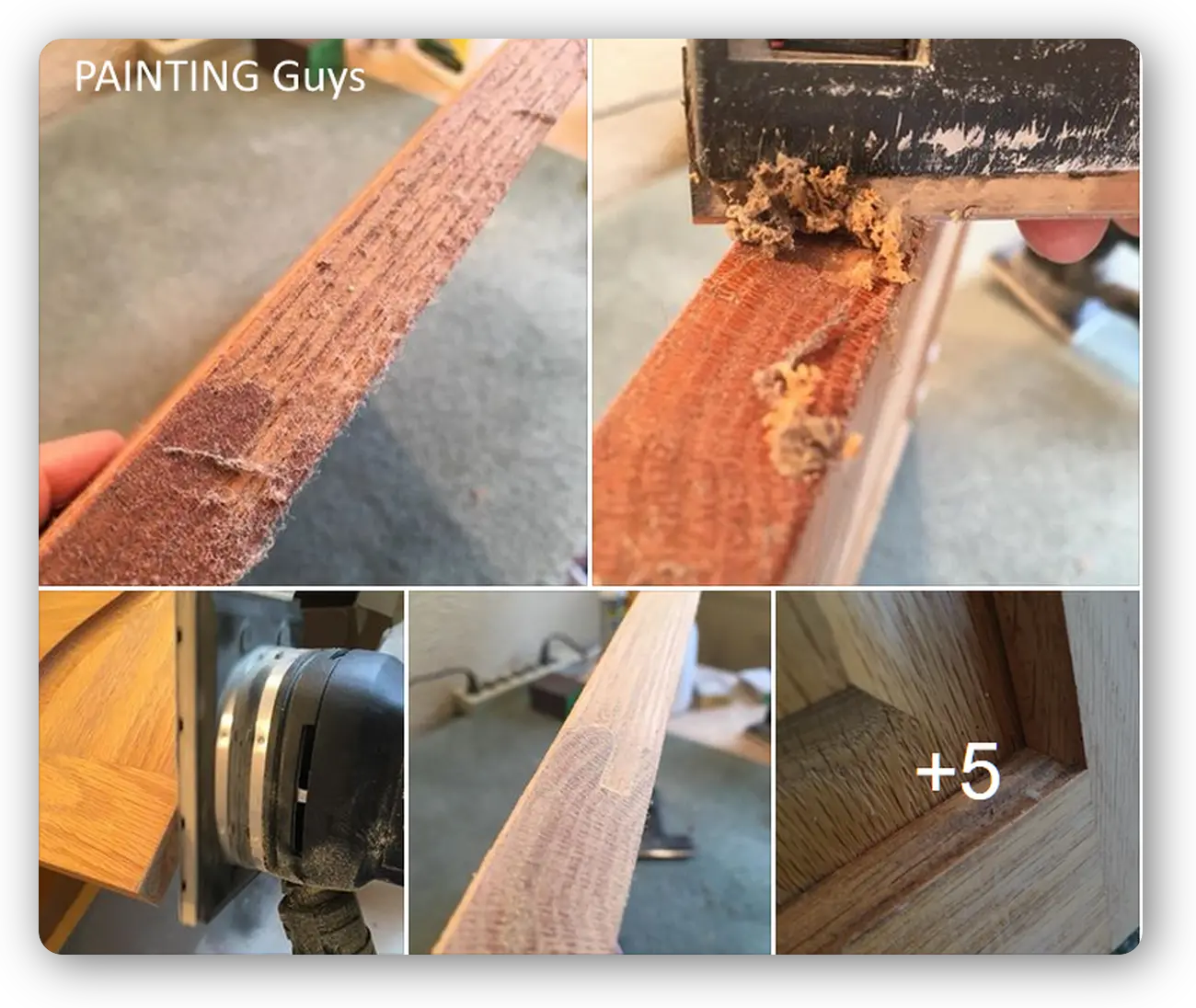Essential Step: Proper Surface Preparation
It's important to note that while degreasers can be helpful, they are not always reliable on their own. Similarly, trisodium phosphate (TSP) is not recommended for use on kitchen cabinets due to its harshness and potential residue.
Best Practices for Cleaning Before Sanding:
- Use Mild Soapy Water: A mixture of warm water and mild dish soap can effectively remove grease and grime without leaving a residue.
- Rinse Thoroughly: After cleaning with soapy water, rinse the cabinets with clean water to remove any soap residue.
- Dry Completely: Ensure the cabinets are completely dry before beginning the sanding process.
By following these steps, you can ensure a clean, residue-free surface that’s ready for painting, leading to a smoother and more durable finish.
Scraping Before Painting
Scraping is an essential step in preparing your kitchen cabinets for painting. It helps remove loose or peeling paint, old finishes, and any other debris that could interfere with the new paint's adhesion.
Here’s how to do it effectively:
- Tools Needed: Use a paint scraper or a putty knife for this task.
- Technique: Apply firm pressure and scrape in the direction of the wood grain to avoid gouging or damaging the surface.
- Follow Up: After scraping, sand the surface to smooth out any rough areas and ensure a clean, even base for painting.
By thoroughly scraping the cabinets, you create a solid foundation for a durable and long-lasting finish.
Scraping and Sanding with Festool

Using Festool tools for scraping and sanding can significantly enhance the quality and efficiency of your cabinet painting project. Festool is known for its high-performance and durable tools, making them a great choice for professional results.
- Scraping:
- Tools Needed: A Festool paint scraper or other suitable tool from their range.
- Technique: Use firm pressure to scrape off loose or peeling paint, old finishes, and any debris. Follow the wood grain to avoid damage.
- Sanding:
- Tools Needed: A Festool sander, such as the RTS 400, paired with appropriate sanding pads.
- Technique: Start with a medium-grit sanding pad to smooth out rough areas, then finish with a fine-grit pad for a perfectly smooth surface.
- Dust Extraction: Festool’s integrated dust extraction system keeps your workspace clean and ensures a healthier working environment.
By utilizing Festool tools, you can achieve a high-quality, professional finish for your kitchen cabinets.
This detailed guide covers the essential steps for preparing your kitchen cabinets for painting, ensuring a professional and durable finish.